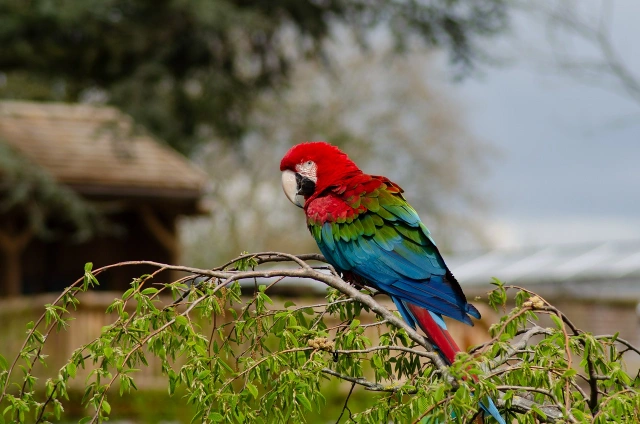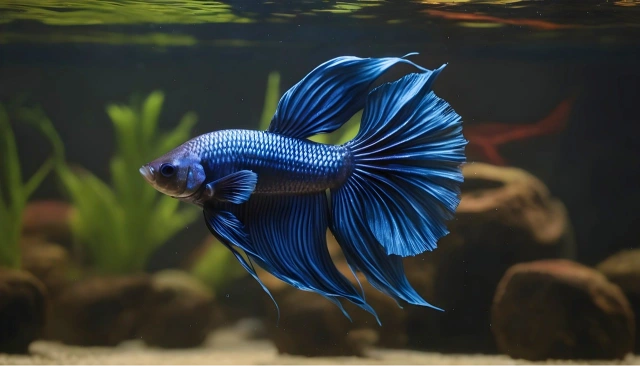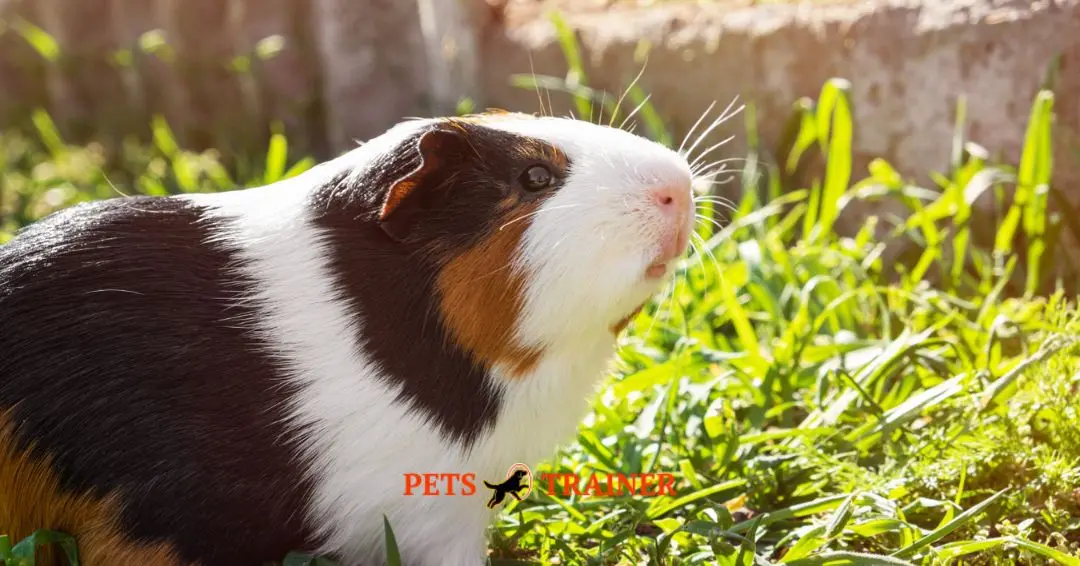Table of Contents
ToggleHave you ever dreamed of having a conversation with a parrot? Imagine the joy of hearing your feathered friend utter words and phrases, mimicking your speech in an uncanny way. Teaching parrots to speak is not just a fun party trick; it’s also a fascinating exercise in understanding animal cognition and communication.
These intelligent creatures can learn to mimic human sounds through vocal training and even develop their unique vocabulary. In this article, I will delve into the world of teaching parrots to speak, exploring the vocal training methods that unlock the hidden potential of these remarkable avian companions.
Understanding Your Parrot’s Potential
Observe your parrot’s natural behaviour and vocalizations to determine its potential for speaking. Some parrots may prefer communicating through whistles or other sounds rather than words. Understanding and respecting their unique communication style is essential for a successful training experience.
Remember, the goal is to enhance the bond between you and your feathered friend, not to force them into something they are not inherently interested in.
Building Trust and Bonding
Vocal training can be a powerful tool for building trust and bonding with your pet parrot. Teaching your feathered friend to speak enhances the connection between you both and strengthens the bond of communication. You can create a unique understanding that goes beyond words through consistent practice and positive reinforcement.
Engaging in vocal training with your parrot opens a world of shared experiences and mutual learning. As you guide your bird through the process of speaking, you are not just teaching them words but also building a deeper level of trust.
This interaction fosters a sense of companionship and camaraderie that can significantly enrich your relationship with your avian companion. In essence, vocal training becomes a bridge that connects hearts and minds in a harmonious symphony of shared expression.
Creating the Right Environment
Creating the right environment is essential when teaching parrots to speak. An environment free from distractions, with ample natural light and room for the bird to play, can enhance learning. Consider placing mirrors in their habitat to encourage social interaction and mimicry, a crucial aspect of vocal training. Incorporating interactive toys and puzzles can keep your parrot engaged and motivated to practice speaking.
Starting with Simple Words and Phrases
Teaching parrots to speak is a fascinating endeavour that often begins with simple words and phrases. Just like learning a new language, starting with the basics allows these intelligent birds to grasp speech nuances gradually. One common technique is repetition, which is the consistent use of the exact words or phrases in specific contexts, and parrots can associate them with certain actions or emotions.
It’s important to remember that each parrot has its own unique pace of learning, so patience is vital when engaging in vocal training. By observing their reactions and adjusting the training techniques accordingly, one can tailor the lessons to suit their individual needs.
Modelling Behavior and Encouraging Imitation
Modelling behaviour and encouraging imitation are potent tools in teaching parrots to speak through vocal training. You can effectively promote language acquisition by creating an environment where the parrot can observe and mimic human speech patterns. It’s essential to exhibit clear and consistent verbal cues for the parrot to imitate, reinforcing positive behaviours and ignoring undesirable ones.
One exciting approach involves using interactive toys that produce speech sounds, enticing the parrot to imitate these sounds. Additionally, incorporating regular practice sessions with varying difficulty levels can help keep the parrot engaged and motivated.
Exploring Natural Vocalizations
Natural vocalizations are a fascinating aspect of the animal kingdom. Birds are mainly known for their diverse and melodic calls. Parrots, in particular, have garnered attention for their ability to mimic human speech through vocal training. This process involves teaching parrots to speak using repetition and positive reinforcement.
By exploring the natural vocalizations of parrots, you can gain a deeper understanding of their communication patterns and social interactions. Listening to these intelligent birds’ intricate calls and rhythms provides insight into their personalities and emotional states.
Encouraging natural vocalizations in parrots enriches their lives and fosters a stronger bond between humans and these remarkable creatures. By embracing and appreciating parrots’ authentic sounds, you can connect with them more profoundly.
Monitoring Progress and Adjusting Strategies
Monitoring progress and adjusting strategies is crucial for success when teaching parrots to speak. One key aspect of effective vocal training is consistently assessing the bird’s performance and making necessary adjustments based on their responses. This could involve changing the words or phrases being taught, adjusting the training schedule, or using different reinforcement techniques to encourage learning.
Additionally, understanding each parrot’s individual personality and learning style is essential in monitoring progress effectively. Some birds respond better to positive reinforcement, while others require a more structured approach. By closely observing how each bird reacts to different training methods and adapting accordingly, trainers can ensure that their efforts are tailored to the unique needs of each feathered student.
Successful vocal training for parrots requires a dynamic and flexible approach that allows for continuous monitoring and adjustment of strategies as needed. Through careful observation and thoughtful adaptation, trainers can create a personalized learning experience that maximizes the potential for their avian students to develop impressive speech skills.
Conclusion
In conclusion, teaching parrots to speak through vocal training can be a rewarding experience for both the bird and the owner. Parrots can quickly learn to mimic human speech patterns by using positive reinforcement techniques and consistency. It is important to remember that each parrot is unique and may progress at its own pace.
Patience and dedication are key in successfully teaching a parrot to speak. With time and effort, the bond between owner and parrot will strengthen as they communicate through words.
FAQs
1. Q: Can all parrots learn to speak?
A: While not all parrots can mimic human speech, many can be trained to speak with consistent vocal training.
2. Q: How long does teaching a parrot to speak take?
A: The time it takes for a parrot to learn to speak varies from bird to bird, but with patience and regular practice, most can start saying simple words within a few weeks.
3. Q: What are some effective techniques for teaching a parrot to speak?
A: Repetition, positive reinforcement, and engaging in interactive conversations with your parrot are critical techniques for successful vocal training.
4. Q: Are certain types of parrots better at learning to speak than others?
A: Larger parrot species, such as African Greys and Amazon Parrots, are generally known for their exceptional speaking abilities, but smaller species, like Budgies and Cockatiels, can also be taught to talk.
5. Q: Can older parrots still learn to speak?
A: Older parrots can still learn new words and phrases through patient and consistent training efforts.
6. Q: Do male and female parrots have equal potential for speaking?
A: Both male and female parrots can learn to talk; gender does not determine a bird’s ability or willingness to mimic human speech.
7. Q: Can my parrot pick up unwanted phrases or sounds during vocal training?
A: Be cautious about what you say around your parrot as they may inadvertently repeat inappropriate words or sounds they hear frequently.
8. Q: How often should I practice vocal training with my parrot?
A: Daily sessions of 10-15 minutes are ideal for consistency in teaching your parrot new words and reinforcing its existing vocabulary.

Dr. Usman Bajwa, a dedicated veterinarian with a passion for pets, brings years of expertise to the world of pet grooming. Through his blog, he shares valuable insights and practical tips to help pet owners provide the best care for their furry companions. With a focus on promoting the health and happiness of pets, Dr. Usman articles offer easy-to-follow guidance on grooming techniques. When he’s not writing, you can find him at his clinic or enjoying time with his own beloved pets.




